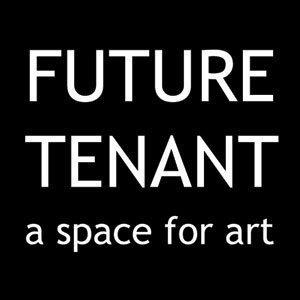"Flash: From the studios at the CMU School of Art", is a group show presenting work by 10 talented young artists from Carnegie Mellon University's School of Art opened on Friday, April 3rd. "Flash" refers to a sudden appearance of inspiration, just like how art is born. Taylor Preston has participated in the "Bountiful" group show last November, and Visual Programming Manager Kate Lin is happy to conduct a second interview with her to know more about her recent work.
Could you give us a brief introduction of who you are and how you became an artist?
Taylor: My name is Taylor Preston, and I’m a senior at Carnegie Mellon studying both art and history. I’m not sure if there’s a specific event in my life that I can pinpoint as sparking my interest in art, I think it has always been a large part of my life. I have always excelled cademically, and I think art presented a new and interesting challenge.
Future Tenant is very excited to show your work again at "Flash". Can you talk about the concepts of your new series, Show Her It’s a Man’s World? Do you feel any differences in your artistic directions since your work Nobody came to my party at the "Bountiful" Exhibition?
Taylor: Definitely. For whatever reason, a lot of people seem to have this idea that history is one gradual progression towards enlightenment. In reality this belief is often used to place more painful moments of our nations history farther in the past. I think that this definitely comes into play when looking at the depiction of women in advertisements. It’s easy when looking at an ad to date it. You can look at the type, or the illustrations, or the images used and fairly confidently say: “oh this ad is definitely from the 50’s, thank god it’s so much better today.” But when you remove the text from the ad, it’s more difficult.
A significant amount of time has passed since the creation of both pieces, and I think it shows. Nobody Came to My Party is definitely more personal, while Show Her It’s a Man’s World addresses something larger. I think this is a good example of a broader shift in my work. But I do think there’s some overlap between the two. Both are experiments, one with physical materials and another with the interplay between text and image.
I understand that most of your recent work relates to history. What was your creative process for those work and how was it different than your past work?
Taylor: I’m not sure if my creative process is really entirely all that different. I still enjoy taking on larger projects, and do a lot of research when working on a piece. I have always loved storytelling, and in the past I have made a lot of work about my own family history, but when I developed more of an interest in history, my interests broadened a bit more. I began to see what it really was that I liked about my own family’s history, and focus more on other obscure and forgotten histories. I began to think more critically about these, and the problems with how they are addressed within the realm of history.
Are you working on any new projects at the moment? And where can we follow your work?
Taylor: I’m currently working on a piece about my unwavering and abiding love of Dolly Parton. I also just started working on a more straightforward documentary photography project about the debate surrounding abortion clinic buffer zones, more specifically at the Planned Parenthood located down town. You can see more of my work at taylorpreston.net. I just changed the header font, and I’m pretty pumped about it.
Where do you see yourself in five years?
Taylor: In a dream world, I’ll have started an artist residency at Dollywood - which I will complete every year because no one else will probably be interested. I always hear people say that you have to set yourself up for success, so I have decided to give it a try. Are you there, Dolly? It’s me, Taylor. In reality, I see myself living somewhere new – with an average temperature of 68 degrees and fairly consistent overcasts. Maybe I’ll have a dog. If I’m doing well, a full breed Powderpuff Chinese Crested. I want to still be making work, and hopefully be in graduate school studying photography. Sometimes I have a difficult time distinguishing between dreams and reality, so I would not entirely rule out the Dollywood artist residency.




